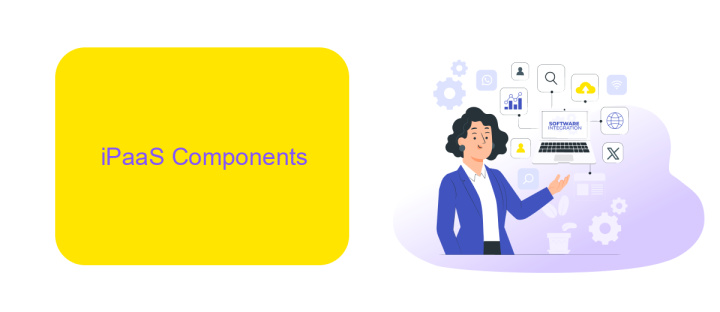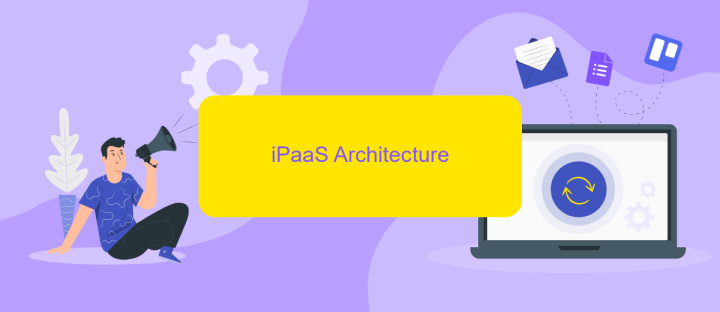iPaaS Architecture
Integration Platform as a Service (iPaaS) architecture has revolutionized how businesses connect disparate systems and applications. By providing a cloud-based solution for integrating various software and data sources, iPaaS enables seamless communication and data flow across an organization's IT ecosystem. This article explores the key components, benefits, and best practices of implementing an effective iPaaS architecture.
Introduction
In today's rapidly evolving digital landscape, businesses are increasingly relying on Integration Platform as a Service (iPaaS) solutions to streamline their operations and enhance connectivity. iPaaS architecture offers a comprehensive framework for integrating various applications, data sources, and services, enabling seamless communication and data flow across the organization.
- Centralized integration management
- Scalability and flexibility
- Real-time data processing
- Enhanced security and compliance
One notable example of an iPaaS solution is ApiX-Drive, which facilitates the setup of integrations between different applications without requiring extensive coding knowledge. By leveraging such platforms, businesses can automate workflows, reduce manual errors, and achieve greater efficiency. As a result, iPaaS architecture is becoming an indispensable tool for organizations aiming to maintain a competitive edge in the digital age.
iPaaS Components

iPaaS (Integration Platform as a Service) solutions consist of several key components that work together to facilitate seamless integration between various applications and services. The primary components include connectors, which link different applications; data transformation tools, which convert data formats to ensure compatibility; and orchestration engines, which manage the workflow of integration processes. Additionally, monitoring and management tools are essential for overseeing the performance and reliability of integrations.
One notable example of an iPaaS solution is ApiX-Drive, which offers a comprehensive suite of features to streamline integration setups. ApiX-Drive provides a wide range of pre-built connectors for popular applications, simplifying the connection process. Its user-friendly interface allows for easy data mapping and transformation, ensuring that data flows smoothly between systems. Furthermore, ApiX-Drive includes robust monitoring tools to track integration performance and quickly address any issues, making it an effective choice for businesses looking to enhance their integration capabilities.
iPaaS Architecture

iPaaS (Integration Platform as a Service) is a cloud-based solution that simplifies the integration of various applications and data sources. It provides a unified platform for connecting disparate systems, enabling seamless data flow and process automation. Organizations leverage iPaaS to enhance operational efficiency, reduce manual intervention, and ensure real-time data synchronization across different platforms.
- Centralized Integration Management: iPaaS offers a single interface for managing all integrations, reducing complexity and improving visibility.
- Scalability: The platform supports scaling to accommodate growing data volumes and increasing numbers of integrations.
- Security: iPaaS ensures secure data transfer between systems, adhering to industry standards and compliance requirements.
- Pre-built Connectors: Many iPaaS solutions, like ApiX-Drive, come with pre-built connectors for popular applications, speeding up the integration process.
- Real-time Monitoring: Continuous monitoring and alerting capabilities help in proactive issue resolution and performance optimization.
ApiX-Drive is an excellent example of an iPaaS solution that simplifies the integration process. It provides a user-friendly interface and a wide range of pre-built connectors, allowing businesses to automate workflows without extensive coding knowledge. By leveraging such platforms, organizations can focus on their core activities while ensuring seamless integration and data flow.
Benefits of Using an iPaaS

Implementing an iPaaS solution can significantly streamline your business operations by seamlessly integrating various applications and data sources. This allows for better communication and data flow between different systems, enhancing overall efficiency and productivity.
One of the key advantages of using an iPaaS is its ability to simplify complex integration processes. Platforms like ApiX-Drive offer user-friendly interfaces that enable even non-technical users to set up integrations quickly and easily. This reduces the dependency on specialized IT staff and accelerates the deployment of new integrations.
- Enhanced data accuracy and consistency
- Improved scalability and flexibility
- Cost savings by reducing manual processes
- Real-time data synchronization
- Better decision-making through integrated data insights
By leveraging an iPaaS solution, businesses can achieve a more agile and responsive IT infrastructure. This not only supports current operational needs but also provides a robust foundation for future growth and innovation. ApiX-Drive, with its comprehensive integration capabilities, exemplifies how an iPaaS can transform the way businesses handle their integration challenges.
Considerations for Choosing an iPaaS
When selecting an iPaaS (Integration Platform as a Service), it's essential to evaluate the platform's compatibility with your existing systems and workflows. Consider the range of pre-built connectors and supported applications, as these can significantly reduce the time and effort required for integration. A platform like ApiX-Drive, which offers a wide variety of connectors, can streamline the integration process and ensure seamless data flow between disparate systems.
Additionally, assess the scalability and flexibility of the iPaaS solution. Your integration needs may evolve as your business grows, so it's crucial to choose a platform that can scale accordingly. Look for features such as real-time data processing, robust error handling, and comprehensive monitoring tools. ApiX-Drive, for instance, provides these capabilities, enabling businesses to maintain smooth operations and quickly address any issues that arise. Ensuring the platform supports both current and future requirements is key to making a sustainable choice.
FAQ
What is iPaaS architecture?
How does iPaaS differ from traditional integration methods?
What are the key components of an iPaaS solution?
How can iPaaS improve business operations?
What are some common use cases for iPaaS?
Do you want to achieve your goals in business, career and life faster and better? Do it with ApiX-Drive – a tool that will remove a significant part of the routine from workflows and free up additional time to achieve your goals. Test the capabilities of Apix-Drive for free – see for yourself the effectiveness of the tool.

